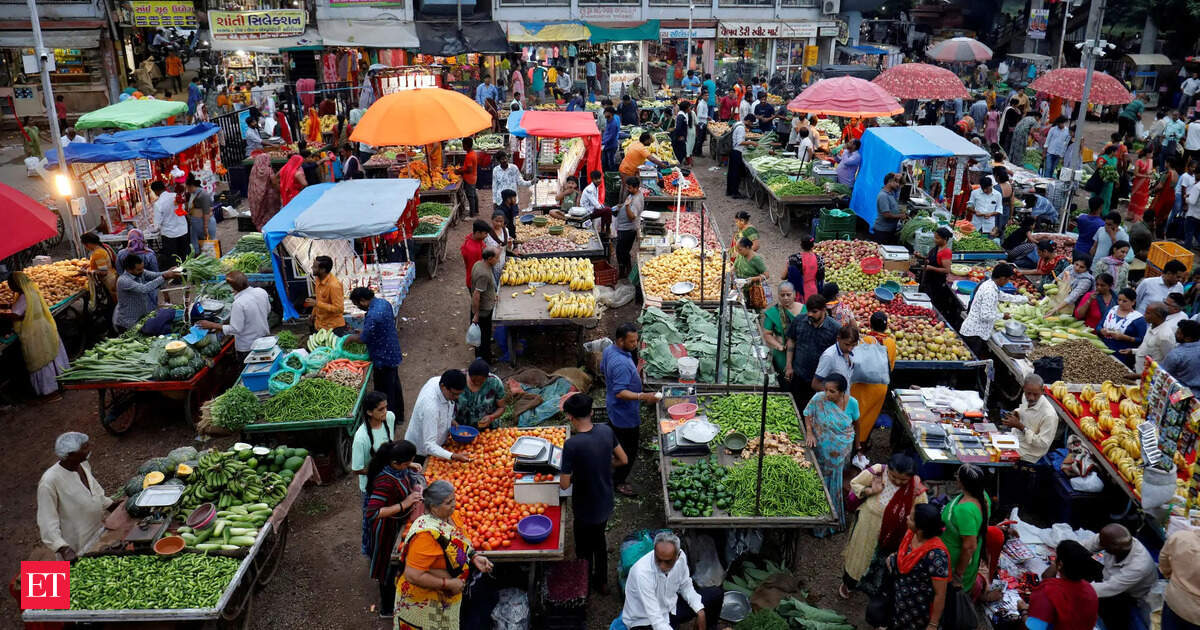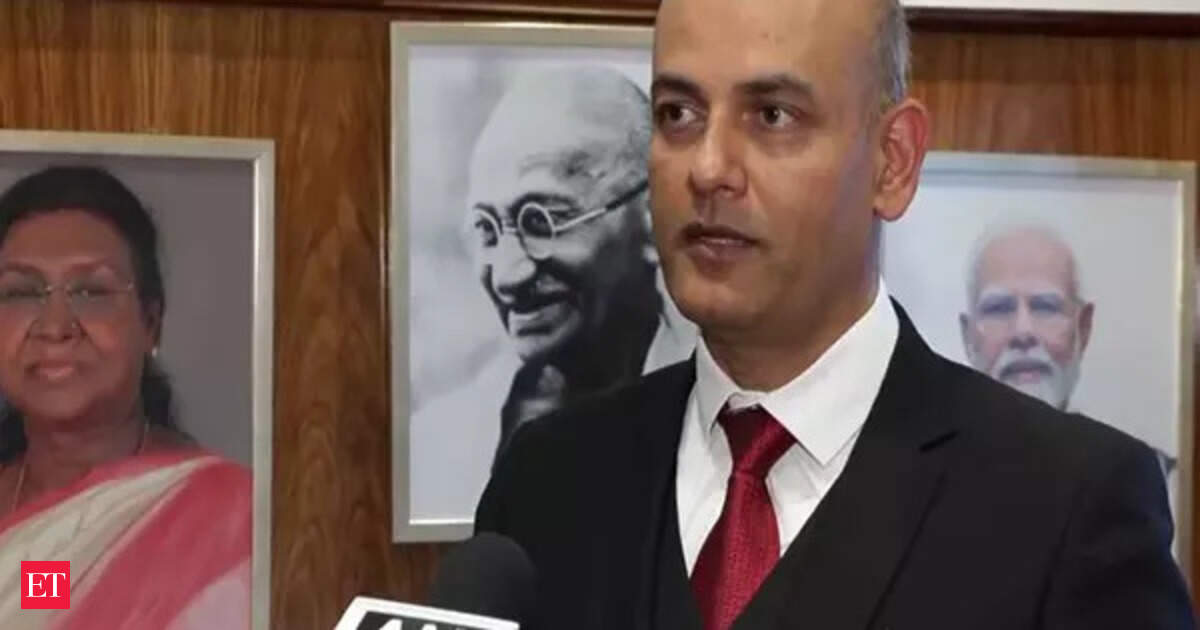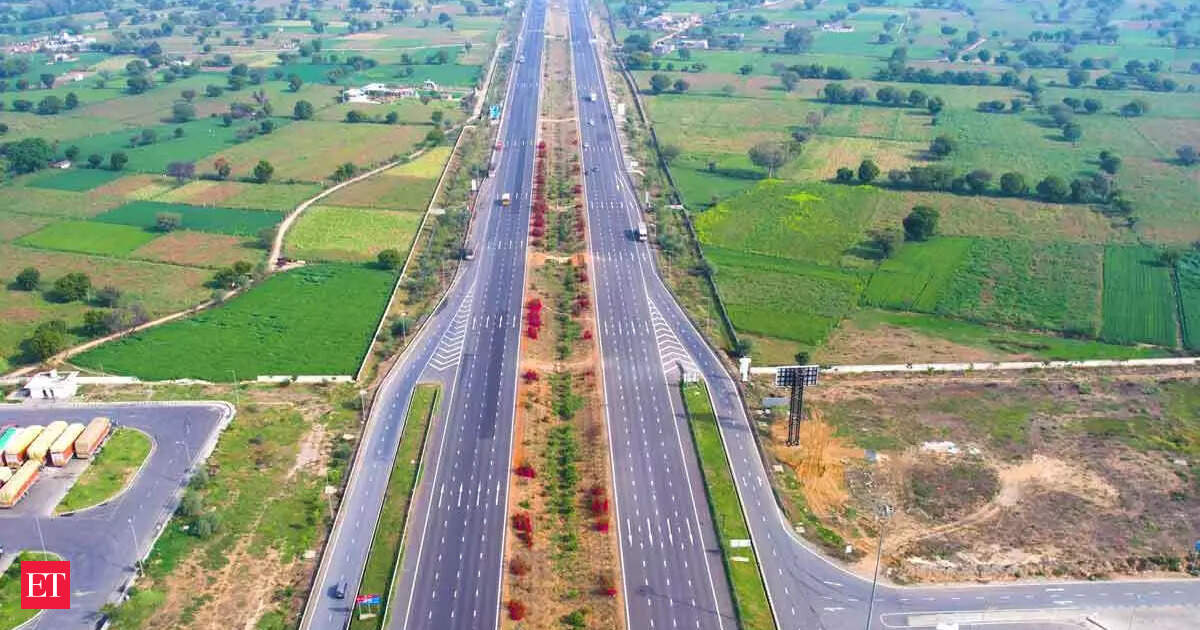The RBI is mandated to target 4% retail inflation within the range. This is the fifth consecutive month that CPI inflation has printed below 4%. Retail inflation is at its lowest since January 2019, when it was 1.97%.
The Wholesale Price Index (WPI) slipped into the deflation zone, hitting a 20-month low of -0.1% in June against 0.4% in May. The drop in the inflation rate was driven by a decline in food and fuel prices and a moderation in manufactured goods. ICRA chief economist Aditi Nayar said a 25 bps cut in August cannot be ruled out, continuing the cuts seen this year in June.
Others didn’t concur.
“This number will not have any impact on the policy decision and hence a status quo can be expected,” said Madan Sabnavis, chief economist at Bank of Baroda.
 ET Bureau
ET BureauStimulus for Demand
CareEdge chief economist Rajani Sinha said, “The Reserve Bank of India has already front-loaded the rate cuts anticipating moderation in inflation, hence we do not expect further rate cuts, unless economic growth weakens materially.”A basis point is 0.01 percentage point. In its last policy announcement on June 5, the RBI cut the repo rate by more than expected 50 basis points, delivering a cumulative one percentage point reduction in calendar 2025 to boost demand. It also lowered the cash reserve ratio (CRR) by 100 bps, but shifted its stance to neutral from accommodative, suggesting a pause on monetary action.Nayar reasons that a slowing economy may bring an August rate cut by the central bank’s monetary policy committee (MPC).
“Given the weakness in a majority of the available high-frequency indicators, we foresee the gross domestic product (GDP) growth to print at 6.0-6.5% in Q1FY26, the data of which will only be available at end-August i.e. after the MPC’s meeting,” said Nayar.
The Centre will release GDP data for the June quarter in August. The MPC meets August 4-6.
Low inflation is expected to help prop up demand.
“The declining inflation is expected to provide a significant boost to the real wages of the households in FY26,” said Paras Jasrai, associate director at India Ratings and Research (Ind-Ra). Jasrai said one more 25 basis point cut could still occur this fiscal year unless there are surprises from global developments or growth hits a slump.
Food inflation
The average retail inflation rate was at a 25-quarter low of 2.7% in the June quarter, lower than the central bank’s forecast of 2.9%, while average wholesale inflation dropped to a five-quarter low of 0.4%. Food inflation, a major component of CPI, slipped to deflation, coming in at -1.1%, the lowest in over six years.
Core inflation, which excludes volatile food and fuel prices and signals demand pressures, rose to 4.4% in June, the highest since September 2023, largely due to an uptick in jewellery. Food inflation dropped due to a favourable base effect and a fall in prices of vegetables (-19%), pulses (-11.8%), and meat & fish (-1.6%). Cereal inflation hit a 41-month low of 3.7%.
Out of 22 major states and union territories, 10 recorded inflation above the national average, with Kerala leading at 6.7%, followed by Punjab (4.7%), Jammu and Kashmir (4.4%), Uttarakhand (3.4%), and Haryana (3.1%).
“Such variation is symptomatic of varying food prices due to producing and consuming states being apart,” said Sabnavis.
Wholesale inflation
Food inflation, which accounts for around one-fourth of the WPI weight, fell to a two-year low of -0.3% in June from 1.7% in May.
Major contributors to food deflation included onions (-33.5%), potatoes (-32.7%), vegetables (-22.7%), and pulses (-14.1%). Fruit prices eased to 1.6% year-on-year in June compared to 10.2% in May.
“The drop in prices of pulses was due to a robust kharif output,” said Jasrai.
Inflation in manufactured products, which account for 64.23% weight in the WPI, eased slightly to 1.97% in June from 2.04% in May. Within this category, vegetable & animal oils and fats recorded the highest inflation at 23.1%, followed by food products (7%), and tobacco products (2.8%). Inflation in primary articles and fuel & power contracted by 3.4% and 2.7%, respectively.
“The fuel & power and crude petroleum and natural gas prices declined during June due to benign global commodity prices,” said Jasrai.




